Have you ever wondered what’s the difference between Europe, the European Union, and the eurozone? While they all contain the word “euro” and all sound very similar, they sure are entirely different things. Many travelers confuse them. Not to mention the Schengen Area, another different concept that travelers should really know about.
That last one is arguably the most important one for travelers, and it’s the one that is the least known. Romania and Bulgaria just fully joined in January 2025, while Croatia had recently joined as well.
I’m sure that if you’re like me, one of the reasons you love to travel is to learn more about our world. And you want to understand these concepts to become a fine connoisseur of all things Europe, one of the most popular continents for travelers (you can also read about Europe’s 4 different regions).
So I’ll explain each of the 4 terms (and a bonus one, too), as I previously did for the United Kingdom vs. England vs. Great Britain vs. the British Isles, and for the 2 Chinas, Hong Kong, and Macau.
Overview of the definitions of European concepts
First, here’s a brief overview of these 4 different terms:
- Europe: A continent located West of Asia and North of Africa, with 44 to 51 countries
- European Union (or EU): A political and economic union of 27 countries in Europe
- Eurozone: A monetary union of 20 (or 26) countries in Europe that use the euro (€) as their currency
- Schengen Area: A territory of abolished internal borders between 29 countries in Europe
I think Europe, the continent, should be clear for all of you. It’s a continent. It’s a purely geographic term: it’s the land, that’s all.
(Although it is the continent with the least clearly defined borders, as some include the Caucasus region in the definition of Europe while others don’t, along with other conflicting opinions on borders… but that’s a whole other topic!)
So then, what’s left is the European Union, the eurozone, and the Schengen Area. Simply put, these are 3 totally different unions — all within the continent of Europe.
To be very clear: not all European countries are in the EU, and not all EU countries are in the eurozone or Schengen Area. In fact, even some non-EU countries are in the eurozone and the Schengen Area.
In other words, countries on the physical continent of Europe can be part of the European Union, eurozone, or Schengen Area. They can be part of all 3, just 2, just 1, or even be part of none of them (looking at you, the Balkans!).
Impact for travelers
Before looking at each of the 4 more closely, let’s take a look at what they mean for travelers specifically:
- Europe: Which continent you are visiting in and of itself means very little
- European Union: It’s a political union and has very little impact on travelers
- Eurozone: This means you know prices will be in euros
- Schengen Area: This means you can travel freely without borders and there is a common visa policy
Yes, concretely, the Schengen Area is the one that matters most from a travel perspective because it means you can move between countries just like if you were moving within the same country: there are no border controls.
But be sure to still double-check the entry rules of the country where you are first entering the Schengen Area. A very basic part of planning a trip.
Every country can have different rules. It’s true for Europe, too. Many ask us about the rules “for Europe” (which just don’t exist; it’s not a country). Canadians will need an electronic visa to enter the Schengen Area — so to enter most of Europe — starting in 2026. It’ll be very similar to the United Kingdom’s electronic visa requirement that kicks in on January 8, 2025.
Most importantly, for those who have the ambition of traveling for a longer period of time, as a Canadian, you are only allowed to stay for 90 total days in the Schengen Area within a 180-day period. Romania and Bulgaria were popular spots to circumvent this, but that isn’t possible anymore.
Details of the 4 European terms
Now, let’s take a more detailed look at each one.
Europe
This is the easiest one. Surely you know what Europe is: a continent.
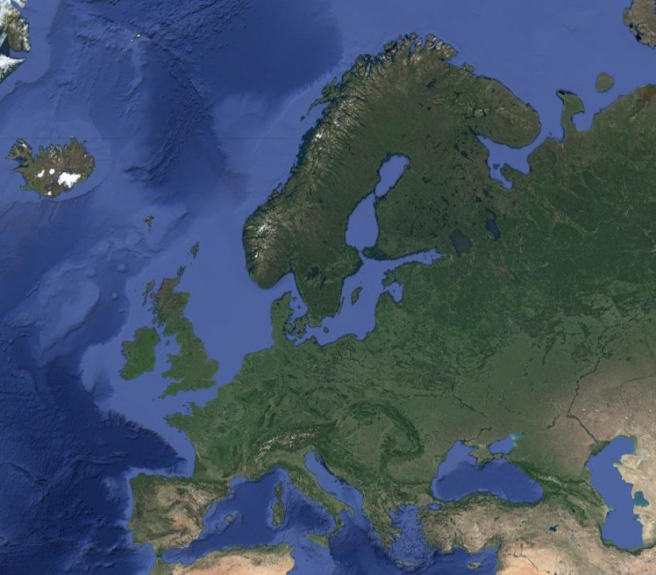
Europe covers an area of 10 million square kilometers (about 4 million square miles), just slightly more than Canada.
It has an estimated population of over 700 million people, obviously a lot more than our 38 million here in Canada.
It is the 2nd-smallest continent after Australia, but the 3rd-most populated continent after Asia and Africa. It borders the Atlantic Ocean in the west, the Arctic Ocean in the north, the Mediterranean Sea in the south, and the Ural Mountains in the east (although that Eastern border is subject to debate, as mentioned).
I won’t list all the countries here; there are so many. You can see them in the next section with the EU and non-EU split.
Europe has at least 44 independent countries, and both the largest (Russia) and the smallest (Vatican) countries in the world. It is home to more than 250 distinct languages, and there are countless spectacular historical, cultural, and natural treasures worth discovering on this continent.
By the way, Flytrippers often spots very affordable flights to Europe for as low as $450 roundtrip from many Canadian cities on our cheap flight deals page!
European Union
The European Union (the EU) is a community of 27 economically and politically connected European countries.
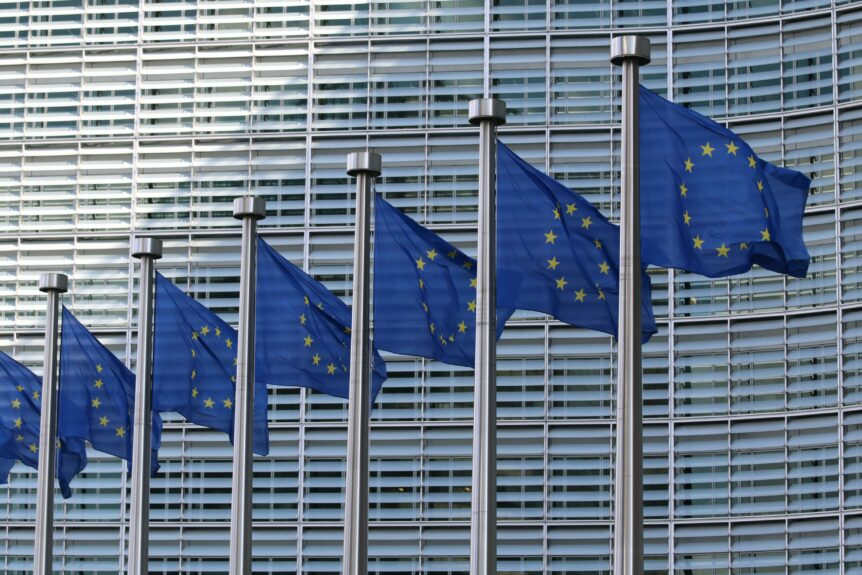
On the world scene, this is by far the most important of the 3 “zones” (EU, Eurozone, Schengen). Yet, for travelers, it’s the one that will have the least impact. A country being a member state of the EU doesn’t necessarily affect your experience traveling there, especially compared to the impact of the 2 other unions below.
But let’s take a look at the details of the EU for those who are interested.
Currently, the EU has 27 member states now that Brexit has happened (the United Kingdom has left the EU after years spent trying). So with at least 44 countries in Europe but only 27 in the EU, you might be wondering which ones aren’t part of the EU.
The most well-known (and the most visited) European countries are in the EU. So it’s simpler to say who isn’t in the EU, as I’ll do after this map of member states.
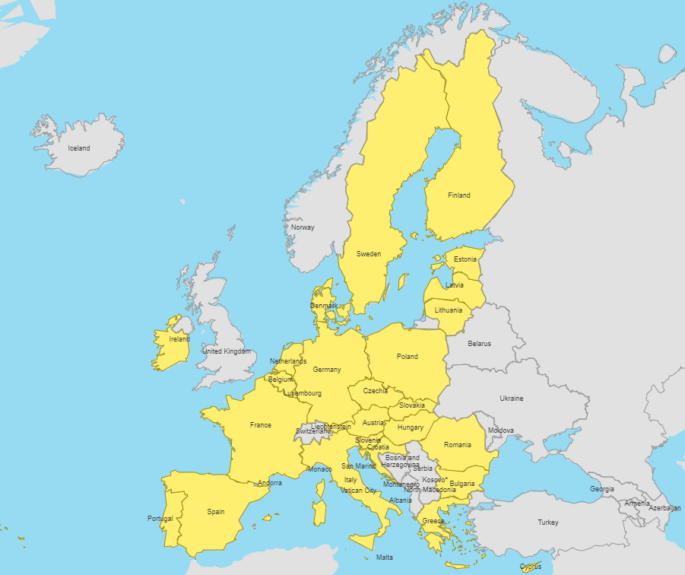
Here are the European countries that are not in the EU:
- 1 country that is neutral in the middle
- Switzerland
- 1 country in Western Europe
- United Kingdom
- 2 countries in Northern Europe
- Iceland
- Norway
- 3 countries in Eastern Europe
- Belarus
- Moldova
- Ukraine
- 6 countries in the Balkans
- Albania
- Bosnia and Herzegovina
- Kosovo
- Montenegro
- North Macedonia
- Serbia
- 5 countries that are tiny
- Andorra
- Liechtenstein
- Monaco
- San Marino
- Vatican
- 2 countries that are transcontinental
- Russia
- Türkiye
- 3 countries usually counted as part of Asia
- Georgia
- Armenia
- Azerbaijan
The reasons why these countries aren’t in the EU vary greatly and are complex. To keep this post shorter, it might be simpler to tell you why the EU was created and what it means for those who are member states.
First of all, the EU has a central government that coordinates actions in many fields.
The EU is also a single internal market, which is based on the four crucial freedoms: free movement of people, goods, services, and capital. This basically means that EU citizens can live, work, and offer services anywhere in the EU, freely move their money, and sell goods without any restrictions (pretty sweet for Europeans who love to travel or want to live in a new country, huh?).
Finally, the EU was created to maintain peace. The 2 World Wars (and countless others before) started in Europe partly because there are so many superpowers in such close proximity… and they had a hard time getting along.
(You’d think politicians would get over stupid conflicts, but the Russian invasion of Ukraine shows that some things never change…)
Eurozone
This one is pretty simple too. If the country uses the euro (€) as its currency, it’s in the eurozone. Well, almost…

First, contrary to popular belief, just because you are traveling in the European Union doesn’t mean you can use the euro. And just because you are traveling outside of the European Union doesn’t mean that you can not use the euro either.
In other words:
- Some EU countries do not use the euro
- Some non-EU countries use the euro
As with everything in the travel world, many people often mix many different things together. The European Union and the eurozone are not the same.
For various reasons, 7 of the 27 EU member states do not use the euro. All, except one, are required to make the euro their currency eventually. Denmark is the exception.
Here are the EU countries that do not use the euro (and their currency):
- 2 countries in Northern Europe
- Denmark (krone)
- Sweden (krona)
- 3 countries in Central Europe
- Czechia (koruna)
- Poland (złoty)
- Hungary (forint)
- 2 countries in Eastern Europe
- Romania (leu)
- Bulgaria (lev)
Croatia is the most recent country to adopt the euro (on January 1st, 2023), doing so at the same time it joined the Schengen Area (but again; the 2 aren’t the same).
By the way, many travelers seem to make such a big deal about currencies while, in reality, it’s really not an issue at all when you know the tricks (just like everything else, basically). We’ll have more content on that soon to show you that you can’t stop worrying about that: wherever you go, it’s easy to get some local currency at the lowest cost, whatever it’s called! And we’ll have a great tip to save on fees to get foreign currencies in there too.
So the eurozone comprises the 20 EU member states that use the euro, at least officially. In reality, 6 other countries use the euro, too.

In teal, 4 other non-EU countries use the euro with a formal monetary agreement between them and the EU. These are 4 tiny nations only bordered by eurozone members.
They aren’t officially part of the eurozone administratively. But for you as a traveler, though, they use the euro, so it’s exactly the same as official eurozone members.
The non-EU countries that use the euro are:
- Andorra
- Monaco
- San Marino
- Vatican
In purple, 2 other non-EU countries also use the euro. But unlike the 4 teal countries, they have adopted the euro unilaterally, without any formal agreement.
These 2 countries are:
- Montenegro
- Kosovo
Again, not officially the eurozone, but you use the Euro there, so it’s all the same for you.
So for travelers, concretely, the Eurozone is very useful because you can use the same currency in 26 different countries.
Schengen Area
Finally, the one most people struggle with. The Schengen Area is a region in Europe where there are no more internal borders, allowing free movement of people and goods.
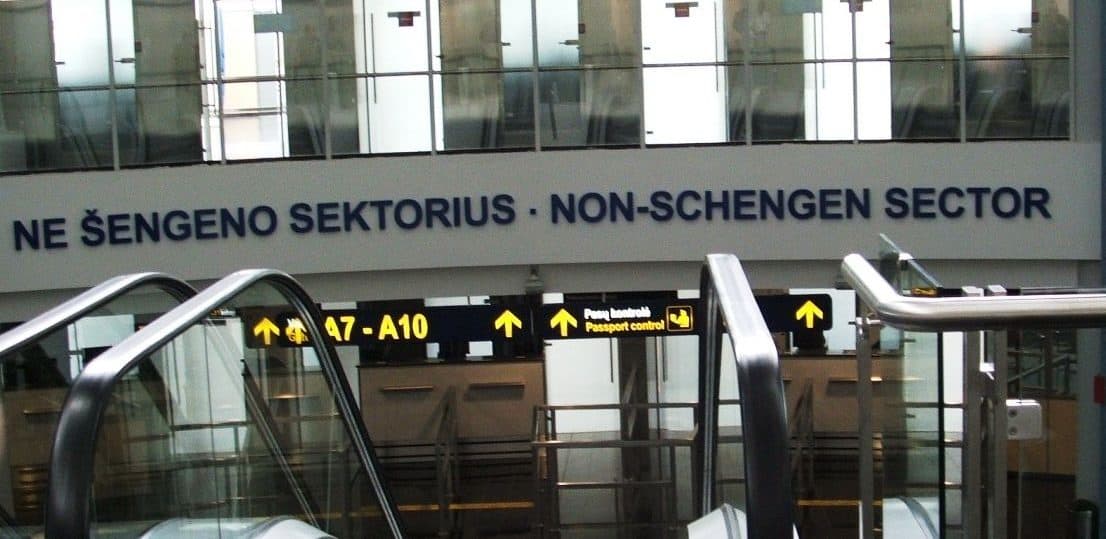
It makes traveling within the continent a lot simpler, whether by plane or by crossing from one country to another overland. That means no passport checks and a common visa policy.
(Again: starting in 2026, Canadians and Americans will need to apply for a “travel authorization,” essentially an electronic visa, to enter the Schengen Area!)
As a traveler, you’ll have seen the Schengen name in European airports. Depending on where you’re going or where you’re arriving from, airports (and customs lines) are separated into “Schengen” and “non-Schengen” sectors (instead of “international” and “domestic”, as is the case in most of the world).
That’s because flights within the Schengen area are essentially domestic flights since no borders exist.
For savvy Canadian travelers who get free access to VIP airport lounges, that means that just like with the transborder/domestic/international split in most Canadian airports, you need to make sure the lounges are physically accessible based on your destination.
The Schengen Area was established in 1995, and it includes 25 EU member states (so not all EU members are in the Schengen Area) and even 4 non-member states. So you can even cross from an EU country to a non-EU country without going through a border.

So as is the case for the eurozone, that means some EU members aren’t part of the Schengen Area.
In this case, it’s these 2 countries that are on islands:
- Ireland
- Cyprus
As mentioned in the intro, Romania, Bulgaria, and Croatia joined the Schengen Area recently. Cyprus is legally required to join eventually, but not Ireland.
The 4 non-EU members who are part of the Schengen Area are:
- Iceland
- Liechtenstein
- Norway
- Switzerland
Without being part of the Schengen Area, 3 microstates don’t have border controls with their neighbors that are part of the Schengen Area, so it has the same effect:
- Monaco
- San Marino
- Vatican
Finally, in case you are wondering about the name’s origin, it comes from the 1985 Schengen Agreement, signed in a village with that name in Luxembourg.
Bonus: EEA
Here’s a bonus since Flytrippers loves giving you more for your money.
At passport control, you might have noticed a sign like this with the letters “EU/EEA/CH” within the round EU stars emblem.
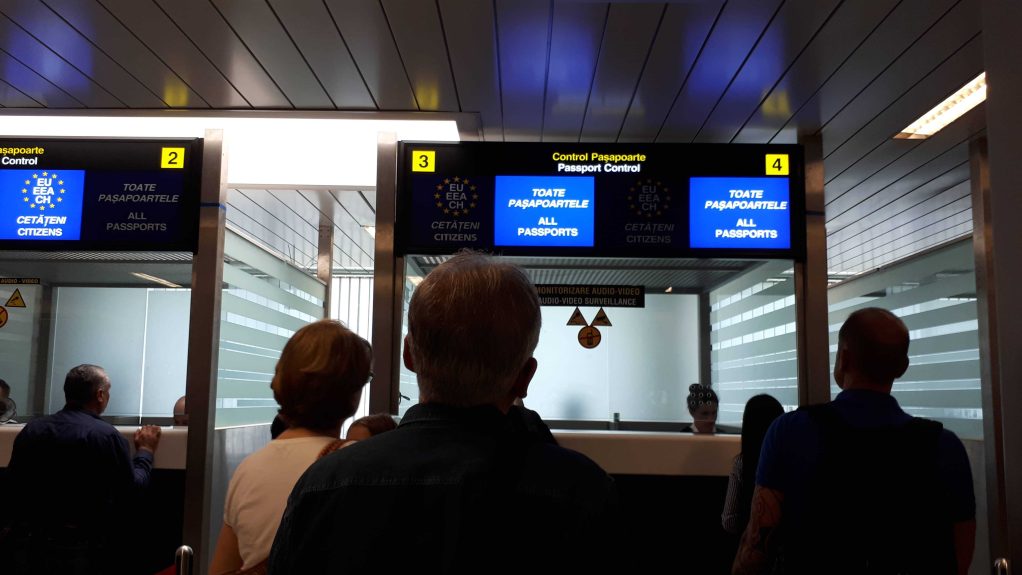
EU is simple.
So that you can go to bed even smarter tonight, CH is the official two-letter country code for Switzerland (Confoederatio Helvetica, Latin for the country’s historical name of Helvetic Confederation). Swiss websites use the “.ch” top-level domain, and their vehicle license plates have the “CH” on them.
Switzerland is not part of the EU but is part of the Schengen Area, so many countries offer CH citizens the same visa policy as EU citizens.
So what’s EEA? Well, it’s yet another structure: the European Economic Area.
I won’t go into too many details, but essentially it’s a union that allows non-EU member states to participate in the EU single market. In other words, a looser association than becoming a full EU member, mainly an economic one (without the political element).
Again, some countries will extend the same visa policies to citizens of those European countries, which is why you’ll see it on some passport control signs.
Learning how to travel for less
Join over 100,000 savvy Canadian travelers who already receive Flytrippers’ free newsletter so we can help you travel for less!
Summary
Europe is the best-known continent in the world, and countries there can be part of different structures like the EU, the Eurozone, and the Schengen Area. Hopefully, now you better understand how the European countries have formed different unions and alliances to ensure better cooperation between one another and less restrictive movement of people, goods, and services.
What would you like to know about the difference between Europe, the EU, the Eurozone, and the Schengen Area? Tell us in the comments below.
See the deals we spot: Cheap flights
Explore awesome destinations: Travel inspiration
Learn pro tricks: Travel tips
Discover free travel: Travel rewards
Featured image: EU flag in Berlin (photo credit: Christian Lue)

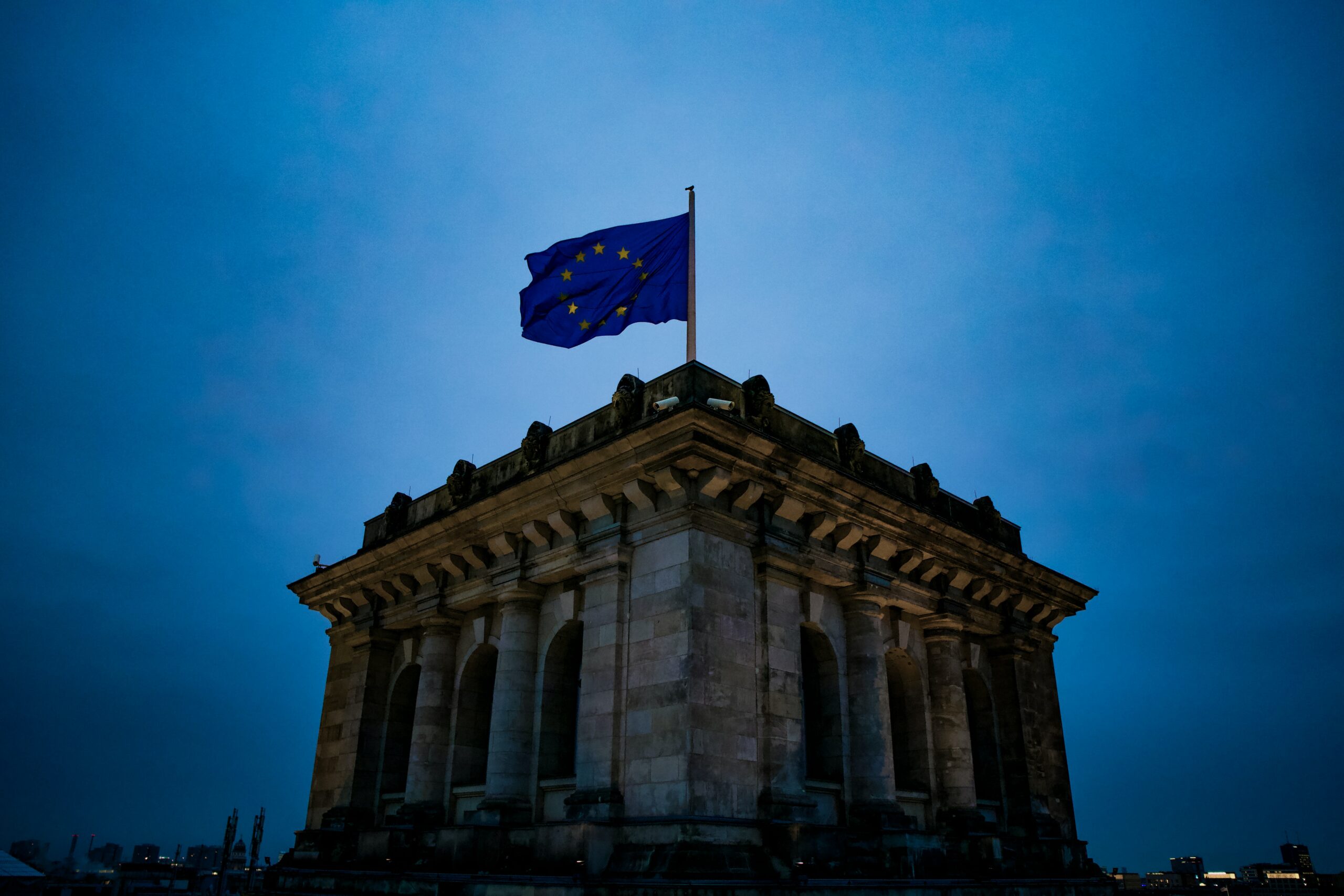



You may to comment on people who have an EU COVID-19 passport ( but are not citizens of any EU (or other European) country. Specifically, I am vaccinated in British Columbia but obtain an EU COVID-19 certificate (A so-called “ covid passport“) & QR code while in France in September. When I would like to know who is if Air Canada, or other Canadian airlines, will accept that as proof of vaccination when boarding a flight after November 30, 2021. I can assure you that Air Canada has told me they don’t know. Not terribly satisfactory, but it’s a Air Canada’s answer
The government didn’t announce any specifics yet, but as we’ve been saying for months, if you are vaccinated, the rest is just logistical details. Have that ready. Have the paper version of your proof from your province. Get the digital passport from your province as soon as it’s ready (soon for BC; detailed post to come). You’ll be fine 🙂
Well done! May I recommend a chart be added?
Country , EU, eurozone, Schengen
France, Y, Y, Y
Ireland, Y,Y,N
Etc.
Hi, that’s a good idea, we’ll try to add that soon.